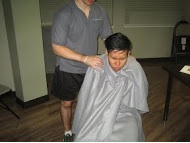Introduction

When human body gets exposed to cold temperatures, it begins to lose heat faster than the heat is produced. This means that if the body is exposed to the cold for a long time, all the stored energy will be consumed leading to a condition referred to as hypothermia. This is a condition in which the body has an abnormal low body temperature. Low body temperature affects the brain, making it hard to think or move well.
People who are more vulnerable to hypothermia
- Elderly people lacking enough food, heating or clothing.
- Babies especially those spending much time in cold bedrooms.
- People who engage much in outdoor activities such as hiking hunter and the homeless.
- Drug and alcohol addicts.
How to recognize the problem?
Adults
- Exhaustion and shivering
- Fumbling hands and confusion
- Drowsiness
- Slurred speech and memory loss
Infants
- Low energy levels
- cold skin with bright red color
First Aid for Hypothermia
If you recognize any of the above signs, you should take the victim’s temperature. If the temperature is low than ninety five degrees, the hypothermia should be treated as an emergency. In case medical help is not available:
- Take the victim in a warm shelter or room.
- If there is any wet clothing remove it.
- Start warming the center of the body i.e. the neck, chest, head and groin by using an electrical blanket if you have it. You can also use skin to skin contact under dry layers of blankets, sheets, towels or clothing.
- You can also give warm beverages to boost the body temperature, but avoid alcoholic beverages. If the victim is unconscious do not give any beverage.
- After the increase of the body temperature, keep the victim dry and wrap him or her in a warm blanket.
- Seek for further medical assistance as fast as possible.
CPR
A person suffering from severe hypothermia may lose consciousness and may seem not to be breathing or having pulse. If this is the situation, handle the patient in a gentle manner and call for emergency help immediately. If you know how to conduct CPR, provide it to the victim even if he or she appears to be dead. The process should be continued as the victim is warmed, until he or she responds or emergency assistance is provided. In most cases, a hypothermia victim may appear dead, but can be resuscitated successfully.
